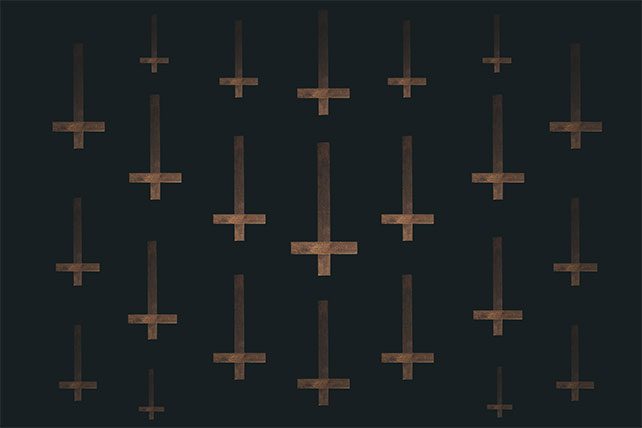Cultural and Social Impact
The Petrine cross extends beyond religious confines, influencing art, literature, fashion, and public discourse.
Art and Literature
In art and literature, the upside-down cross has been used to evoke themes of sacrifice, inversion of societal norms, or critiques of religious institutions. It appears in medieval paintings, Gothic literature, and contemporary artworks, each time adapting to the cultural and temporal context of its use, often stirring public debate and interpretation.
Influence on Fashion and Lifestyle
Fashion and lifestyle sectors have adopted the Petrine cross, sometimes stripped of its original religious significance, as a symbol of rebellion, individuality, or subcultural identity. This has led to controversy, especially when used in ways that offend religious sensibilities or trivialize the symbol’s historical weight.
Public and Media Reactions
The use and display of the upside-down cross in public spaces and media often elicit strong reactions, from outrage and condemnation to support and reclamation of its intended meaning. These reactions reflect the symbol’s potent ability to provoke dialogue and reflection on religious identity, freedom of expression, and historical memory.
RELATED: Freedom of Expression in a Photoshop World
Personal and Theological Reflections
The Petrine cross serves as a mirror, reflecting personal and collective interpretations of faith, humility, and the human condition.
Personal Interpretations
Believers and non-believers alike may find personal resonance with the symbol, viewing it as a representation of their own struggles, doubts, or beliefs. For some, it is a reminder of their own unworthiness and the need for humility; for others, a symbol of persecution or misunderstood faith.
Theological Discussions
Theologically, the upside-down cross spurs debates on the nature of martyrdom, sacrifice, and the Christian call to follow in the footsteps of the saints. It raises questions about the value of suffering, the meaning of humility, and the role of tradition in contemporary faith practices.
Within modern Christian practice, the symbol’s use varies widely, from reverent veneration to cautious avoidance. It embodies the ongoing struggle to reconcile historical traditions with contemporary beliefs and challenges. By understanding its multifaceted legacy, we can appreciate the Petrine Cross not only as a relic of the past but as a living part of our collective cultural and spiritual discussion.

